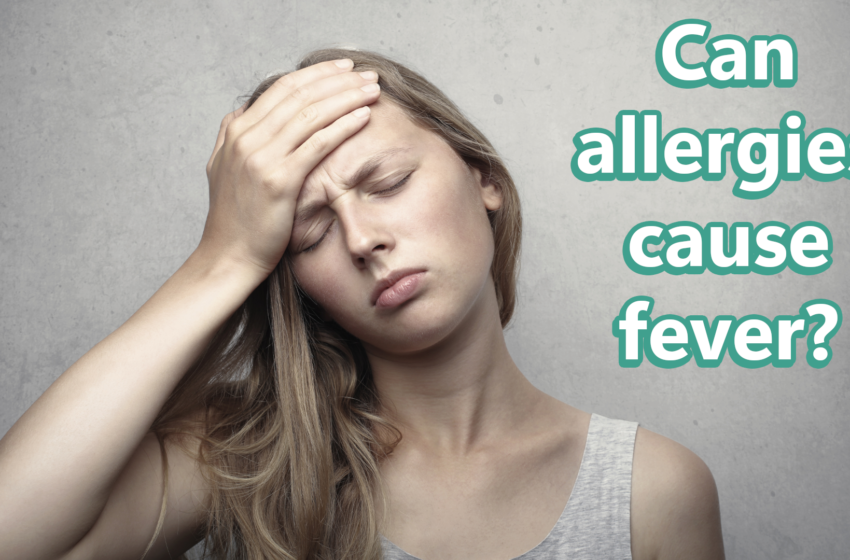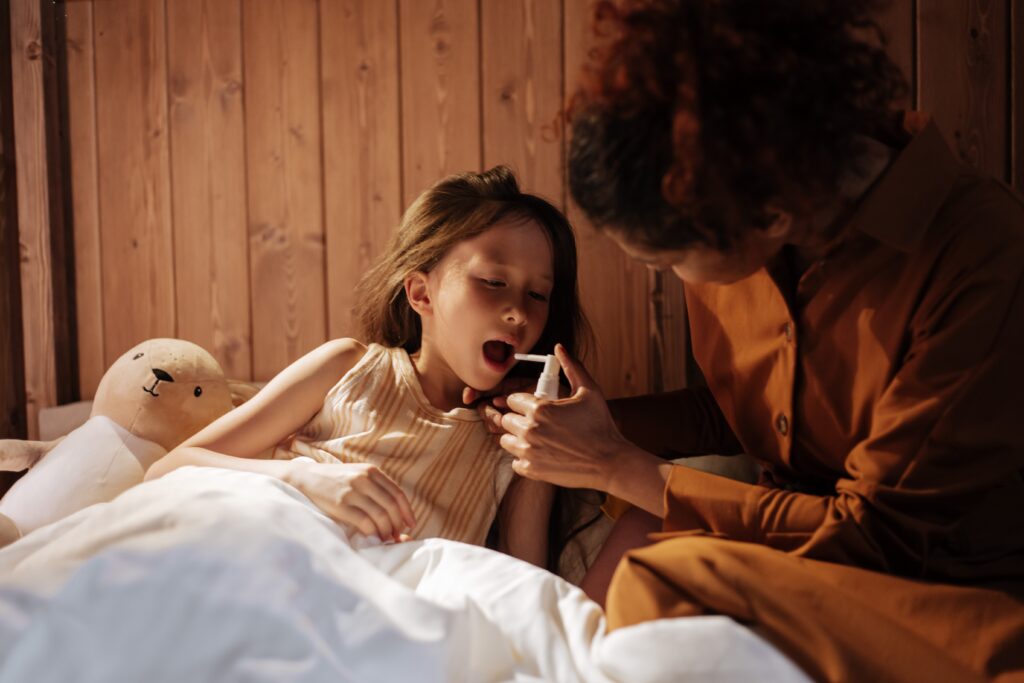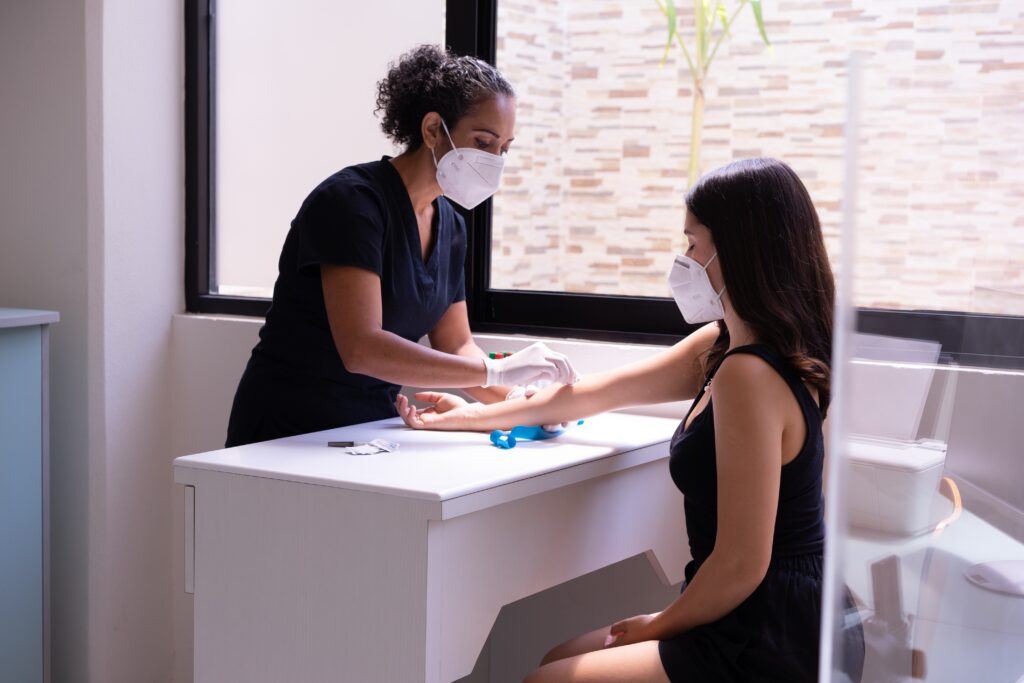With your allergens, are you getting a fever? Learn more about this condition’s origins and how to get treated for allergies in Denver.
No, allergies do not directly induce a fever, is the short response. When your body is battling a viral or bacterial infection, a high temperature is an indication. Since a fever is a symptom of a sinus infection, allergies can sometimes trigger that condition, which can then result in a sinus infection.
Contents
1. Can allergies lead to fever?
Allergies do not result in a temperature, according to the American College of Allergy, Asthma, and Immunology. A sinus infection, on the other hand, can be brought on by an allergic reaction and ultimately result in fever.
Your immune system produces a chemical when your body comes into touch with an allergen, protecting your body from the foreign substance. The actual cause of your seasonal allergy complaints is this chemical, called histamine.
It’s usually because of persistent nasal congestion that has resulted in a sinus infection if you have a fever along with allergy symptoms like runny nose or itchy eyes. Chronic sinus infections, which frequently result in fevers, are much more common in people with allergy rhinitis than in healthy individuals.

2. Typical allergic reactions
What are some clear signs that you have seasonal allergy rhinitis, then? The following are some common ones to watch out for, though it relies on the allergen in question and how sensitive your body is to it:
Clogged nostril
Congestion
Itchy throat, nostrils, and eyes
Sneezing
Coughing
Sinus congestion or headaches
Unwell tongue
Wheezing
Breathing difficulty
Nasal post-drip
Fatigue
There are other causes for this kind of response besides seasonal allergies. Some of these symptoms, including nausea and an upset stomach, can be brought on by food sensitivities. Hives and skin rashes may also be signs of an allergic response.
3. Hay fever: What is it?
Contrary to popular belief, hay fever, also known as allergic rhinitis, doesn’t truly cause a fever. Simply put, hay fever, also referred to as seasonal allergies, is an allergic response to irritants that are airborne, such as pollen and pet dander.
Hay fever signs are similar to those of seasonal allergies and include sneezing, nasal congestion, itchy or watery eyes, and a sore tongue.
4. What may lead to an Allergy-related fever?
Congestion and other allergy-like symptoms can be brought on by a variety of illnesses, including sinusitis, the flu, the common cold, or COVID-19. It can be challenging to pinpoint the origin of your congestion and fever because these conditions are frequently mistaken with seasonal allergies.
Here is a list of the four most typical reasons of congestion and fever.
5. Sinusitis
Simply stated, sinusitis is an inflammation of the hollow spaces behind your cheeks, nose, and eyes known as your sinuses. Mucus accumulates and obstructs these passageways as your sinuses swell. You most likely have sinusitis if you feel uncomfortable pressure behind your eyes or in your nostrils.
The following are typical signs of severe sinusitis:
Brow and cheek discomfort
Fever
Clogged nostril
Nasal discharge after.
Congestion
Coughing
Toothache
6. Flu
Naturally, not all fevers are brought on by sinusitis. A fever that lasts for up to four days can be brought on by the virus. A flu infection frequently comes with the following signs and symptoms:
Clogged nostril
A runny nostril
Cough
Unwell tongue
Headache
Fatigue
Pains in the body
A minor temperature
7. Common cold
The typical cold is another reason for temperature. As a viral illness, the common cold can occasionally result in fever and chills. Additional signs include:

Aches and discomfort in muscles
Headache
Sneezing
Congestion
Coughing
A minor temperature
Unwell tongue
8. COVID-19
COVID-19 is a viral infection, just like the common influenza. COVID-19 has an array of distinct effects on various people. The COVID-19 virus can cause the following symptoms, among others:
Cough
Respiration challenges
Fatigue
Headache
Taste or scent disappearing
Throat pain
Congestion
Vomiting or nauseous
Aching muscles
Diarrhea
9. How to find an Allergy
Contacting an ENT expert is a great idea to determine whether your symptoms are brought on by allergies. Following your meeting, you should take the following three actions to maximize your time there:
9.1 Give a thorough account of your medical background
This will make it easier for your allergist to determine whether your symptoms and the allergens you’ve been subjected to are related.
Record your symptoms in a journal. Make a notation of when your symptoms start, get worse, or go away! One way to determine whether your allergies are seasonal is with the help of this knowledge.
9.2 Test your allergies
The best method to determine what is causing your symptoms is through allergy testing. An allergist will typically conduct a scratch test to evaluate your response to several allergies simultaneously. You might choose to perform an intradermal, skin patch, or blood test in some circumstances.
A doctor will prescribe antibiotics if a bacterial illness is the root of your fever; these drugs should start working within 1-3 days.
If a virus is the cause of your symptoms, your doctor may advise taking antiviral medicine, or you may just need to wait it out. Within a week or two, the majority of infections disappear on their own.
Your doctor will advise you to remain at home, rest, and take over-the-counter medications if you have sinusitis, the common cold, the flu, or COVID-19. Usually, after a week, you’ll start to see progress.
In the event that allergies are the cause of your symptoms, your doctor will probably suggest a mix of therapies. We’ll take you through a few common techniques.
9.3 Personal Changes
An efficient and inexpensive method to lessen your exposure to allergens is to change up your daily routine. Consider the following suggestions to lessen the impact of allergies:
Clean up the oxygen in your house.
Regularly clean and vacuum.
Utilize organic additives (vitamin C or peppermint oil).
Irrigate your nose
9.4 Medications
The best results from lifestyle adjustments come when they are combined with medication. Both over-the-counter (OTC) and prescribed medication is offered. Antihistamines like Claritin, Zyrtec, or Allegra are typically used to treat allergies, but other medications can also be helpful in the management of allergic rhinitis.


























